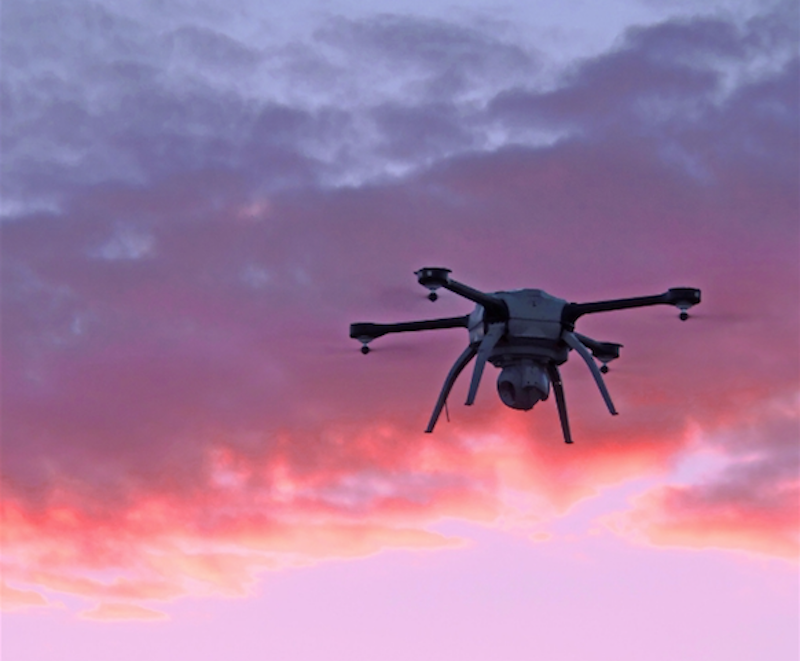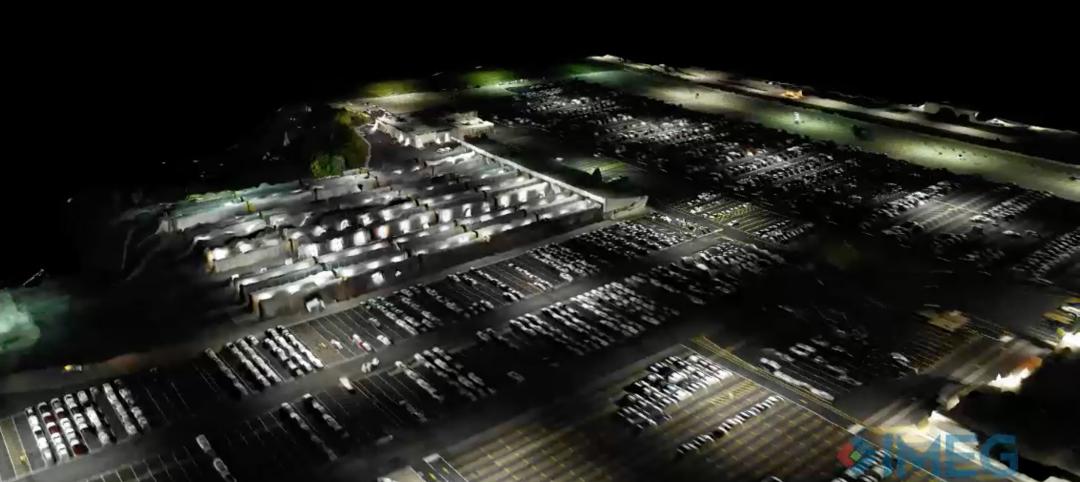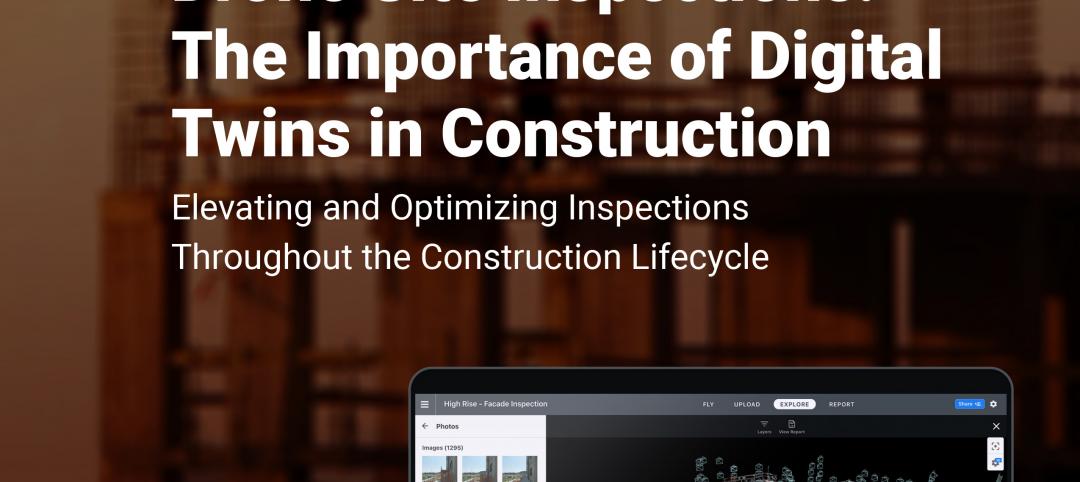Drones can often times be unfairly judged. When people hear the ominous buzzing of a rotary wing drone overhead and look up to see it silhouetted against the sun, it can be easy to hear “Flight of the Valkyries” start playing in your head and think the NSA is coming to get you. And while safety and privacy issues are certainly of concern when it comes to operating drones, what is often times disregarded is just how useful UAVs (unmanned aerial vehicles) can be.
The SkyBEAM (Building Envelope Aerial Mapping) UAV, from Tremco Roofing & Building Maintenance, developed by Industrial SkyWorks, is a perfect example of how a drone can be utilized as a tool for cutting costs and improving workplace safety for certain jobs. The SkyBEAM UAV combines the use of a high-definition camera and a thermographic (infrared) camera to fly around buildings and locate where there may be energy leaks, damage, deterioration, safety issues, or other potential problems. The thermographic camera shows temperature variations around a building that may indicate problems, such as poor or missing window sealing or wet rooftop insulation, so that the issues may be fixed. If not rectified, issues such as these can add up to significant capital expenses, increased operating costs, and occupant discomfort.
This type of infrared scanning is most effective at night when the sun is not warming the building. In the past, technicians would climb the rooftops at night to conduct their infrared scans. Façade inspections meant technicians needed to work from scaffolding or cranes, both of which would lead to added costs and safety concerns. But now, since the SkyBEAM has become the first commercial drone approved by the FAA for nighttime operation, these expenses and safety concerns can be eliminated.
A two-person crew, one of which is a licensed pilot, operates SkyBEAM from the ground. The UAV can fly horizontally across roofs and can reach heights of 400 feet (or about 40 stories) while retaining its flight path in winds up to 25 mph and gusts up to 50 mph. SkyBEAM has a top speed of 25 mph.
Ideal for low-slope roofing and façade diagnostics on multi-building campuses such as educational institutions and healthcare facilities, SkyBEAM’s high-resolution camera can map problem areas of a building such as gaps or tears in the roof, tiny cracks or movement in the façade, and deteriorating concrete.
All of the information from SkyBEAM’s two cameras is then consolidated into a comprehensive, interactive, and easy-to-understand report that can be accessed through a cloud-based application. The software creates a virtual model of the building in 2D and 3D that can be viewed from any angle, be overlaid with thermal images to their exact location, and can have photographs, comments, and other data added in real time through a tablet so technicians can always have the most up to date information. Additionally, data can be transmitted to technicians on the roof so they can always see their location in relation to the problem areas. As technicians walk across the roof, the scan moves with them so they can locate exactly where the work needs to be done.
Drones, despite the surfeit of rules and regulations regarding their use, appear to be in it for the long haul. Many companies are already experimenting with drones as a form of delivery, such as Amazon and Domino’s, and being allowed to fly after sunset would also greatly aid these companies in their visions for how to best utilize UAVs. The FAA projects more than seven million drones may be purchased over the next 15 years, and as their uses grow, such as with the SkyBEAM UAV, that number will likely grow, as well.
Just imagine watching as a drone appears on the horizon carrying your large pepperoni and cheese pizzas. What a time to be alive.
Related Stories
AEC Innovators | Feb 28, 2024
How Suffolk Construction identifies ConTech and PropTech startups for investment, adoption
Contractor giant Suffolk Construction has invested in 27 ConTech and PropTech companies since 2019 through its Suffolk Technologies venture capital firm. Parker Mundt, Suffolk Technologies’ Vice President–Platforms, recently spoke with Building Design+Construction about his company’s investment strategy.
Drone Software | Jun 12, 2023
Drones take site assessments to new heights
Eric Vallejo, Director of Reality Capture and Geospatial Solutions, IMEG Corp., discusses strategies for using visualization and reality capture.
Sustainability | May 1, 2023
Increased focus on sustainability is good for business and attracting employees
A recent study, 2023 State of Design & Make by software developer Autodesk, contains some interesting takeaways for the design and construction industry. Respondents to a survey of industry leaders from the architecture, engineering, construction, product design, manufacturing, and entertainment spheres strongly support the idea that improving their organization’s sustainability practices is good for business.
AEC Tech | May 1, 2023
Utilizing computer vision, AI technology for visual jobsite tasks
Burns & McDonnell breaks down three ways computer vision can effectively assist workers on the job site, from project progress to safety measures.
AEC Tech | Jan 27, 2023
Key takeaways from Autodesk University 2022
Autodesk laid out its long-term vision to drive digital collaboration through cloud-based solutions and emphasized the importance of connecting people, processes and data.
Giants 400 | Nov 14, 2022
4 emerging trends from BD+C's 2022 Giants 400 Report
Regenerative design, cognitive health, and jobsite robotics highlight the top trends from the 519 design and construction firms that participated in BD+C's 2022 Giants 400 Report.
Contractors | Nov 14, 2022
U.S. construction firms lean on technology to manage growth and weather the pandemic
In 2021, Gilbane Building Company and Nextera Robotics partnered in a joint venture to develop an artificial intelligence platform utilizing a fleet of autonomous mobile robots. The platform, dubbed Didge, is designed to automate construction management, maximize reliability and safety, and minimize operational costs. This was just one of myriad examples over the past 18 months of contractor giants turning to construction technology (ConTech) to gather jobsite data, manage workers and equipment, and smooth the construction process.
AEC Tech | Dec 8, 2020
COVID-19 affects the industry’s adoption of ConTech in different ways
A new JLL report assesses which tech options got a pandemic “boost.”
















